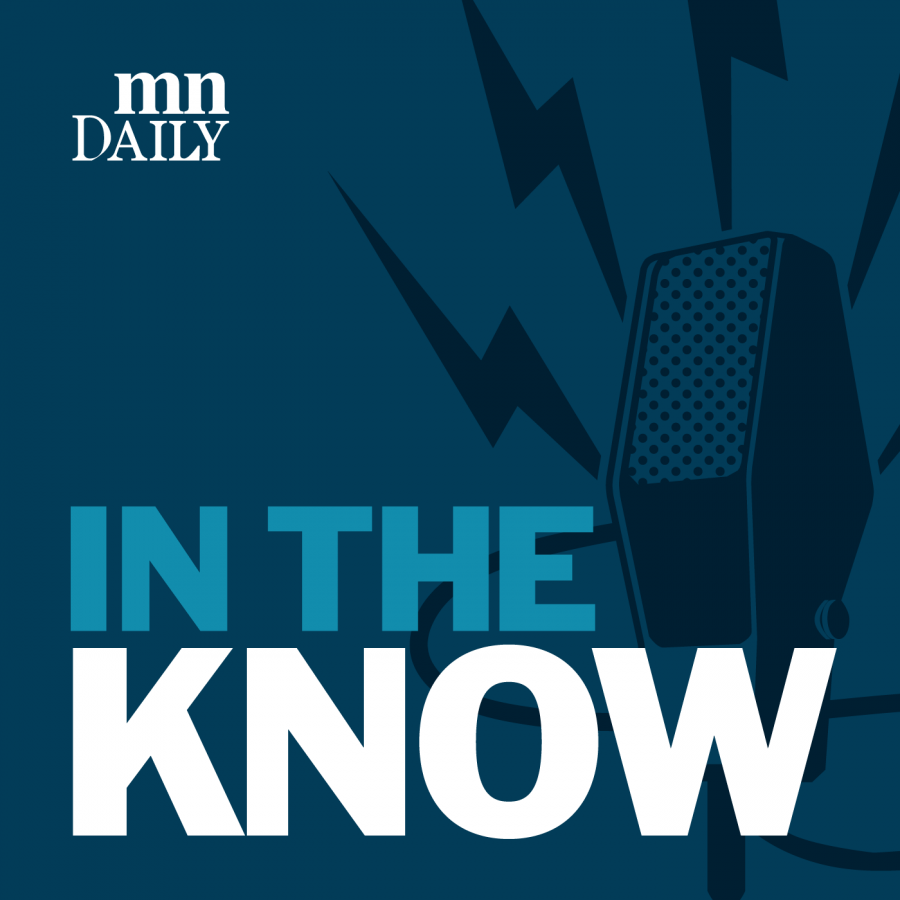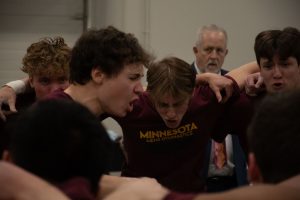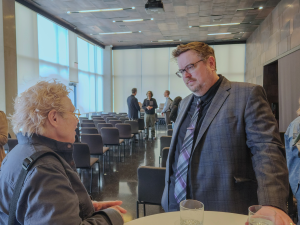A study released Nov. 17 by the United Health Foundation ranked Minnesota the healthiest state tied with New Hampshire.
But Minnesota Department of Health officials said this is not a complete picture of Minnesotans’ health.
Based on indicators such as premature death rate and number of residents with health insurance, Minnesota was healthy compared to other states, but there are still significant health and health-care disparities between whites and minorities.
“This is what we call looking below the averages,” said David Stroud, a Minnesota Department of Health statistical scientist.
The Community-University Health Care Center is one of the organizations helping to bridge these disparities between whites and minorities in Minnesota, as well as between the insured and uninsured.
The center, located in the Phillips neighborhood, provides basic medical, dental and mental health care to uninsured patients or those on government health-care programs such as Medicaid.
Established in 1966 as part of University hospitals and clinics, the center now receives a small part of its funding from the University’s Academic Health Center.
Fairview Health Services’ purchase of University hospitals in 1997 led the clinic to apply for and receive federal designation as a community clinic. It is now largely funded by patient revenue and grants.
Karl Self, executive director of the center, said Phillips neighborhood residents who use the center are prime examples of Minnesota’s health-care disparity.
People who visit the clinic have less access to affordable, quality health care, or they might not have insurance at all, Self said.
According to the latest Department of Health statistics, black, American Indian and Hispanic people in Minnesota were up to four times less likely than whites to be insured.
Aside from coverage, social factors such as poverty play into the general health of Phillips residents, many of whom have of low incomes, Self said.
“When you are worrying about where you are going to live, or you may not have a job, you will not be focusing on your health,” Self said. “Those things compound a person’s ability to maintain a healthy lifestyle.”
Seventy percent of the Phillips neighborhood is made up of minorities, according to 2000 census data.
Eighty-five percent of the clinic’s patients are on public health-care plans or are uninsured, Self said. The clinic provides care based on a sliding scale payment basis.
“But we treat people regardless of their ability to pay,” he said.
The clinic deals with health-care disparity indicators such as teen pregnancy and infant mortality on a daily basis, Self said.
For example, the percentage of black women with inadequate or no prenatal care declined from 20 percent between 1989 and 1993 to 12.5 percent between 1996 and 2000. But white women with inadequate or no prenatal care remained at about 3 percent through both survey periods.
The 2000 birth rate for black teenagers in Minnesota was more than four times that of white teens.
In Minnesota, teen birth rates for minorities were higher than national averages, according to the Health Department.
“These kinds of issues all affect the residents of Phillips,” Self said.
Catering to its clients
The clinic’s door greets visitors with “Welcome!” in seven languages: Somali, Cambodian, English, Spanish, Vietnamese, Laotian and Hmong. Inside, care is available in each of these languages and in a culturally sensitive environment.
The clinic hosts health-education groups for each culture, Self said. Dental, medical and mental-health specialists give culturally tailored care.
The Hmong community is a case of how specialized health needs and circumstances vary among different ethnic groups. The Hmong community has been in the Twin Cities for 25 years, Self said, and has started to have elevated diabetes levels.
As Hmong immigrants – originally from Laos – have adapted to a Western culture that involves more meat in the diet and less activity than in their homeland, their general health has declined and diabetes cases have risen.
Different cultures might suffer from the same afflictions, but they can suffer differently, Self said.
“Over time, they have shown the same diseases that we find here,” he said. “Many of them are lower-income at this point, and they have those same afflictions that affect low-income people of all races.”
In a way, the center is treating the social symptoms of some health-care problems, he said.
“It’s the social conditions in a lot of cases that exacerbate these disparities,” Self said.
Patients direct clinic
According to its bylaws, 51 percent of the members of the center’s community governing board must be patients.
Susan Gust lives on the 2600 block of Bloomington Avenue South, in the middle of the Phillips neighborhood, and is beginning her second term on the board.
Gust is currently a patient at the center.
The patient part of the board must be proportionately representative of the neighborhood, she said. Currently, a vacant seat on the approximately 15-member board will remain unfilled until an Asian representative is found.
Such cultural and economic sensitivity is one of the center’s main strengths, Gust said.
“It is the only place where the people who work there look like the people sitting in the waiting room,” she said.
As an uninsured person, Gust said, she was often made to feel ashamed or embarrassed when going to other clinics because she had public health insurance.
“I feel treated more respectably at the center. Knowing my life is more complicated, no one is going to judge me for that,” Gust said.
According to preliminary data compiled in part by University researchers, some minorities feel slighted and marginalized when dealing with public health-care programs such as Medicaid or Minnesota Care, or with lower-cost clinics in general.
“There are a lot of experiences of mistrust, discrimination and being treated unfairly,” said Kathleen Call, a University public health policy professor.
Call said memories of public health practices such as the Tuskegee experiment, when doctors knowingly injected black men with syphilis while saying they were testing a flu vaccine, still cast a shadow of mistrust for some minority communities. This leads some minorities to avoid health care or only go if they are sick.
Center patients can choose which doctor will see them, and having a doctor of the same ethnicity helps foster trust for patients, Gust said.
Gust said the Phillips neighborhood has been an ever-changing immigrant community for more than 150 years.
“As that face of who Phillips is changes, the clinic adjusts accordingly,” she said. “The board has that street presence to respond to what’s changing on the street and who’s living in the community.”










